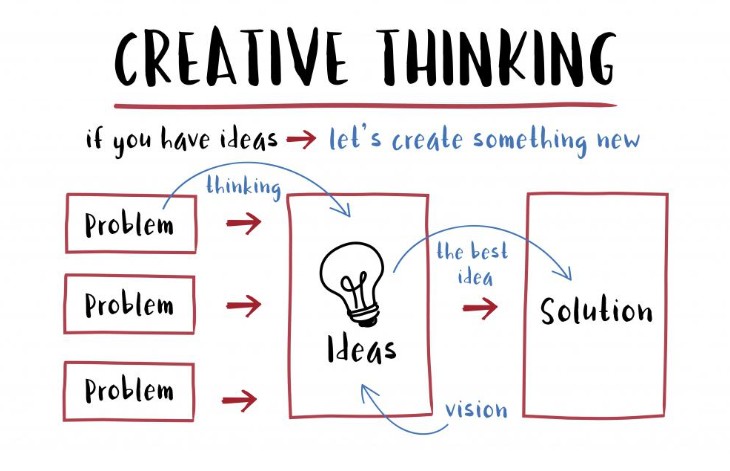So there I was, three years ago, sitting in a café in Austin, sipping on what I thought was an oat milk latte but tasted suspiciously like regret. I was fresh into launching my second business—a handmade candle company that smelled like breakups, brunch, and ambition. And I was stuck. Like, smushed-flat-by-an-anvil kind of stuck. I’d tried all the creative thinking exercises people preach about: mind mapping, word association, the classic “walk it off and wait for a lightning bolt.”
But here’s the kicker. I spent an entire week doing a “SWOT analysis” thinking it was some edgy idea-generation technique. Spoiler: it’s not. That moment of confusion is what inspired me to ask the big question: which of the following is not a creative thinking exercise entrepreneurs use to generate ideas?
If you’ve ever felt creatively constipated (TMI?), don’t worry—I’ve got you. Let’s break down the exercises that actually work and the ones that are basically just business buzzword salad.
What Actually is a Creative Thinking Exercise?
 Image Source: Pinterest
Image Source: Pinterest
Okay, let’s level-set before we get too wild. Creative thinking exercises are mental workouts designed to shake you out of boring, linear patterns. They’re not about having the “right” answer. They’re about surfacing new ideas—things you wouldn’t have thought of in your spreadsheet-robot mode.
Mind mapping? That’s legit. It helps you branch out from a core idea and make unexpected connections. Brainstorming? Old-school but still golden if you do it right. SCAMPER? Weird name, powerful method—it gets you to play with Substituting, Combining, Adapting, and all that jazz.
But which of the following is not a creative thinking exercise entrepreneurs use to generate ideas? Hint: it rhymes with “knot,” and it’s all about analyzing—not generating. Yup, we’ll get there.
Is SWOT Analysis Just a Fancy Corporate Buzzword?
Alright, here’s the tea. SWOT standing for Strengths, Weaknesses, Opportunities, and Threats is a super useful tool but it’s more about organizing info than creating something new.
I used to think it was some kind of visionary wizardry that would conjure up my next product idea. But nope. It’s more like a really detailed reality check. SWOT analysis helps you assess your business situation. That’s important but it’s not what you whip out when you want to come up with a glow-in-the-dark yoga mat subscription service.
So if you’re answering the question, which of the following is not a creative thinking exercise entrepreneurs use to generate ideas?, ding ding: it’s SWOT. Save it for strategy day, not idea day.
Why Do Entrepreneurs Use Creative Exercises in the First Place?
 Image Source: Pinterest
Image Source: Pinterest
You’d think entrepreneurs are naturally overflowing with big ideas 24/7, right? Lol, no. The creative block is real. And when you’re trying to stay ahead in the game, you can’t just rely on inspiration to strike while you’re shampooing your hair.
That’s where exercises come in. They give structure to your messy thoughts and help you play mental hopscotch around your usual thinking. Plus, they’re team-friendly. Ever tried “reverse brainstorming”? It’s hilarious and weirdly effective. Instead of asking “How do we attract more customers?” you ask, “How do we scare every single customer away?” Then you flip the answers.
It’s genius. It’s weird. And it works.
Which Isn’t a Real Creative Thinking Exercise?
Let’s compare it with some real idea-generating champs:
| Exercise | Purpose | Creative or Not? |
| Brainstorming | Free-form idea generation | ✅ Yes |
| SCAMPER | Modify existing ideas in unique ways | ✅ Yes |
| Mind Mapping | Visual idea association | ✅ Yes |
| SWOT Analysis | Evaluate internal and external factors | ❌ Nope |
SWOT helps you make smart decisions after you’ve got the ideas. It’s more MBA than Muse. You need both—just not at the same time.
How to Actually Use SWOT Without Killing Creativity

Image Source: Pinterest
First, know when to use which tool. If you’re sitting around with a team, trying to dream up your next business idea, don’t reach for SWOT. You’ll kill the vibe faster than a Monday morning email.
Instead, use tools like mind mapping or role-storming (where you pretend to be someone else—like Oprah or Elon Musk—and think how they’d solve the problem). Once you’ve got some wild, unfiltered ideas, then you can bring in SWOT to figure out which ones are realistic or viable.
It’s like dating: creative thinking is the flirty, exciting first date. SWOT is the serious talk about “where is this going?”
What Are Some Creative Thinking Exercises That Actually Work?
Here are a few I swear by (and no, none of them involve pie charts):
1. The Crazy 8s Technique
You fold a sheet of paper and draw 8 quick ideas in 8 minutes. It forces you out of perfectionism mode. Some of my weirdest (and best) ideas came from this.
2. Brainwriting
It’s like brainstorming, but quieter. Everyone writes down ideas first before sharing. Great if you have shy team members or loud talkers who dominate everything.
3. Reverse Brainstorming
Weird? Yes. But gold. Thinking about how to fail helps you figure out what not to do—and, surprisingly, what to do.
These work. SWOT? Save that for after.
FAQ: Real Questions from Entrepreneurs Who’ve Been There
1. What’s wrong with using SWOT for idea generation?
Nothing’s wrong—it’s just not what SWOT is built for. It helps you assess and analyze. You want idea explosions, not tidy lists of your weaknesses. Use SWOT later in the process.
2. Is there a right time to use SWOT?
Totally. Once you have a few ideas, SWOT is your filter. It helps you see what’s doable, what’s risky, and where the market is already crowded. Think of it as the sorting hat after your brainstorm session.
3. Can I combine SWOT with other techniques?
Absolutely. Think of it like an ideal sandwich. Start with brainstorming (bread), add juicy ideas (filling), and finish with SWOT (the bottom slice that holds it together).
4. How do I know if an exercise is “creative”?
If it helps you explore, expand, or twist your thinking, it’s creative. If it’s focused on evaluating, ranking, or analyzing, it’s probably not. Look for exercises that make you feel a little uncomfortable—in a good way.
Final Scoop Before You Jump In
If you’ve been staring at a blank whiteboard wondering why SWOT isn’t sparking any million-dollar ideas, now you know why. It’s not broken—it’s just showing up to the wrong party.
The next time you’re noodling on a business concept or stuck in a fog of “meh,” reach for the right tool. Spark first. Sort later. That’s the trick.
And remember, creativity isn’t about being born with a magical brain. It’s about giving yourself the space—and permission—to play.
 aspectswebdesign.com
aspectswebdesign.com
